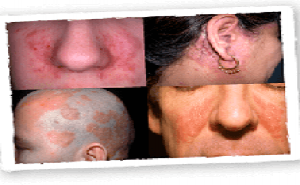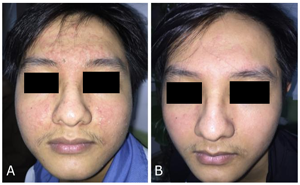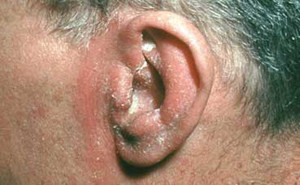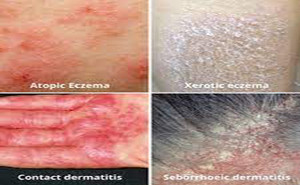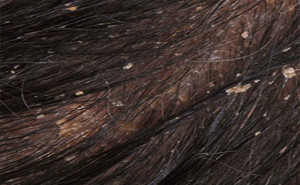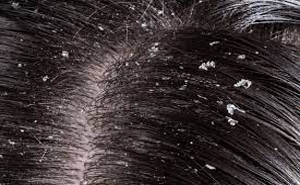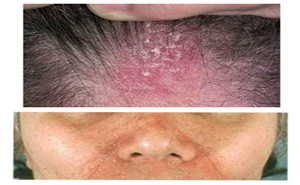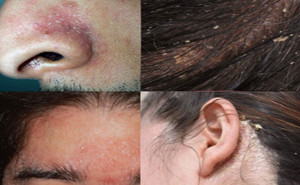Featured
Clinical, Cosmetic and Investigational Dermatology: Published
on December 2022Seborrheic dermatitis (SD) is a
common chronic inflammatory skin disorder that most commonly affects young
adults, and less often children. In adolescents and adults, SD clinical
presentation may range from a mild scalp scaling to diffuse white, yellowish
patches in...
Ketoconazole
is in a class of antifungal medications called imidazoles. It works by inhibiting
the growth of fungi that cause the infection.
Topical
ketoconazole is indicated for the treatment of cutaneous candidosis (including
vulvitis), tinea (pityriasis) versicolor and seborrhoeic dermatitis caused by
Malassezia (previously called Pi...
Seborrheic dermatitis (SD) is a
chronic common inflammatory skin disease, affecting 1-3% of the adult
population which is a common chronic erythematous scaly eruption usually seen
in areas rich in sebaceous glands, the scalp, face, chest, back, and flexural
areas.Malassezia yeasts have been
implicated in the pathogenesis of this disease. Antif...
PubMed: Published on April 2022Seborrheic dermatitis (SD) is a
common inflammatory skin disease, which is particularly prevalent in older
adults, presenting with papulosquamous morphology in areas rich in sebaceous
glands, particularly the scalp, face, and body folds.PathogenesisWhile a specific cause of
seborrheic dermatitis remains largely un...
PubMed Central: Published
on August, 2022TAKE HOME MESSAGE:Seborrheic dermatitis (SD) is a
common chronic inflammatory skin disorder that mostly affects young adults in
areas rich in sebaceous glands (scalp, face, and trunk). In adolescents and adults, SD
clinical presentation may range from mild patches to diffuse scalp scaling. In
infants, i...
American Family
Physician (AFP) Journal:Seborrhoeic Dermatitis (SD) is a very common chronic and/or
relapsing inflammatory skin disorder presenting with a papulosquamous
morphology in areas rich in sebaceous glands, particularly the scalp, face, and
body folds.In adolescents and adults, SD clinical presentation may range
from mild patches to d...
PubMed Central: BMJ Clinical EvidenceSeborrhoeic dermatitis affects at
least 3% to 10% of the population and causes red patches with greasy scales on
the face, chest, skin flexures, and scalp.The cause of seborrhoeic dermatitis
is unknown. Malassezia yeast species are thought to have an
important role.The inflammatory process may be
mediated i...
American Family Physician (AFP) Journal:
Seborrheic dermatitis is a common
skin condition in infants, adolescents, and adults.
Seborrheic dermatitis is a chronic
inflammatory dermatologic condition that usually appears on areas of the body
with a large density of sebaceous glands, such as the scalp, face, chest, back,
axilla, and gro...
Metabolic Syndrome and Related
Disorders Journal: Published
Online: 15 Feb 2022
Seborrheic dermatitis (SD) is a
common, chronic inflammatory disease with relapses and remissions.
TAKE HOME MESSAGE:
This study aimed to evaluate
metabolic syndrome (MS) and glucose metabolism disorders in patients with SD.
The study results showed...
American Family Physician (AFP) Journal: Published: Feb 1, 2015
KEY RECOMMENDATIONS FOR PRACTICE
Topical antifungal agents are the
first-line therapy for acute and long-term treatment of seborrheic dermatitis
of the face and body.
Antifungal shampoos (long-term) and
topical corticosteroids (short-term) can be used as sec...
Seborrhoeic Dermatitis (SD) is a
very common chronic and/or relapsing inflammatory skin disorder presenting with
a papulosquamous morphology in areas rich in sebaceous glands, particularly the
scalp, face, and body folds.
Etiology
Yeast of the genus Malassezia has long been regarded as a main
predisposing factor. Additional predisposi...
